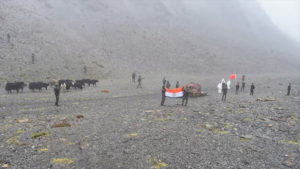
New Delhi: India and China are standing at a historic turning point after 5 years. If China implements the agreement announced by India and China with full honesty and purity, then the Tiger and Dragon of Asia will succeed in creating history. Implementation of this agreement will mean that Indian soldiers will be able to patrol up to the point where they used to patrol before 2020 on the border with China i.e. LAC (Line of actual control). That is, the situation before the Galwan incident on the LAC between India and China will be restored. Today, in the BRICS Summit, Prime Minister Narendra Modi and Chinese President Xi Jinping
It is worth noting that there is no clear situation regarding the border between India and China. And the Line of Actual Control (LAC or Line of Actual Control) is considered the border. But India and China have their own claims regarding this LAC as well. Due to this, Indian and Chinese soldiers often come into a confrontational posture on the LAC. This latest agreement between India and China includes the issue of patrolling in Depsang and Demchok. After this agreement, there will be disengagement of Indian and Chinese forces from Depsang and Demchok, that is, the armies of both the countries will retreat from this area.
If India and China come to the situation before Galwan i.e. April 2020 on the LAC, then it will be a big diplomatic and military victory for India. It is worth noting that in August 2020, there was a clash between India and China in Galwan. But what will be the effect of this agreement on the physical level? That is, what effect will the agreement have on the Indian forces in Depsang and Demchok. It is important to know this.
With the implementation of this agreement, Indian forces will be able to go to Patrol Point 10, 11, 11A, 12, 12A and Patrol Point 13 in Depsang. Let us tell you that the Rakinala area, Y junction area, Bottle neck area in Depsang were such areas where after May 2020, when the Indian army used to go to its patrolling point, the Chinese army used to come and sit there and did not allow India to patrol.
India had also done the same and did not allow China’s soldiers to reach the claim line. The claim line is the area up to which both the countries claim their border. In this way, both the armies were blocking each other’s way. Now it has been decided that both the armies will not block each other’s way and both the armies will go to their petrol points and claim line. These facts are related to Depsang.
Associate Professor Arvind Yelari at the Center for Chinese Studies, Jawaharlal Nehru University, said in a conversation with BBC that “Earlier we could go up to Patrolling Point 10 in Depsang. Now after the agreement is implemented, it is expected that we will be able to patrol up to PP 13.” If we talk about Demchok, here also both the armies will be able to go to their patrolling points in the southern end of eastern Ladakh. Foreign Minister S Jaishankar had said the same thing on Monday. He had said that after the implementation of this agreement, Indian soldiers will once again be able to go to the border with China as far as they used to patrol before 2020.
Earlier, Foreign Secretary Vikram Misri, while giving information about this agreement with China, said that this is resolving the issues that arose in these areas in 2020. Under the agreement, the armies of both the countries will come to their old place in Depsang and Demchok. Galwan, north and south banks of Pangong Tso, Patrolling Point 14, 15, 17 Alpha in Gogra-Hot Springs area, the armies of both the countries had already retreated here. Non-military ‘buffer zones’ have been created at these places.
China said that the problems of Depsang and Demchok were going on for a long time. There should be no dispute on this now. But the Indian government remained firm on its stand and said that if economic and trade relations are to be improved, then the situation before April 2020 will have to be implemented in Depsang and Demchok as well. There was a state of indecision on this for many months. Several rounds of talks were held between India and China, then both the countries agreed to reach this decision.
It is worth noting that India has not changed its stand in bringing the status quo of 2020 in Depsang and Demchok. Actually China respects power. In the last 4 and a half years, India did not allow China to move even a step forward in the disputed areas. After this, China came to the table of agreement with India.
It is worth noting that disengagement has just happened between India and China. Disengagement and deinduction are pending. Let us tell you that disengagement means the retreat of the armies standing face to face on a front and disengagement means the steps taken to reduce the situation of tension between two countries. Whereas deinduction would mean that the more than 50,000 troops of both countries deployed in Ladakh should go back to the same positions where they were during peacetime.
©2024 Agnibaan , All Rights Reserved